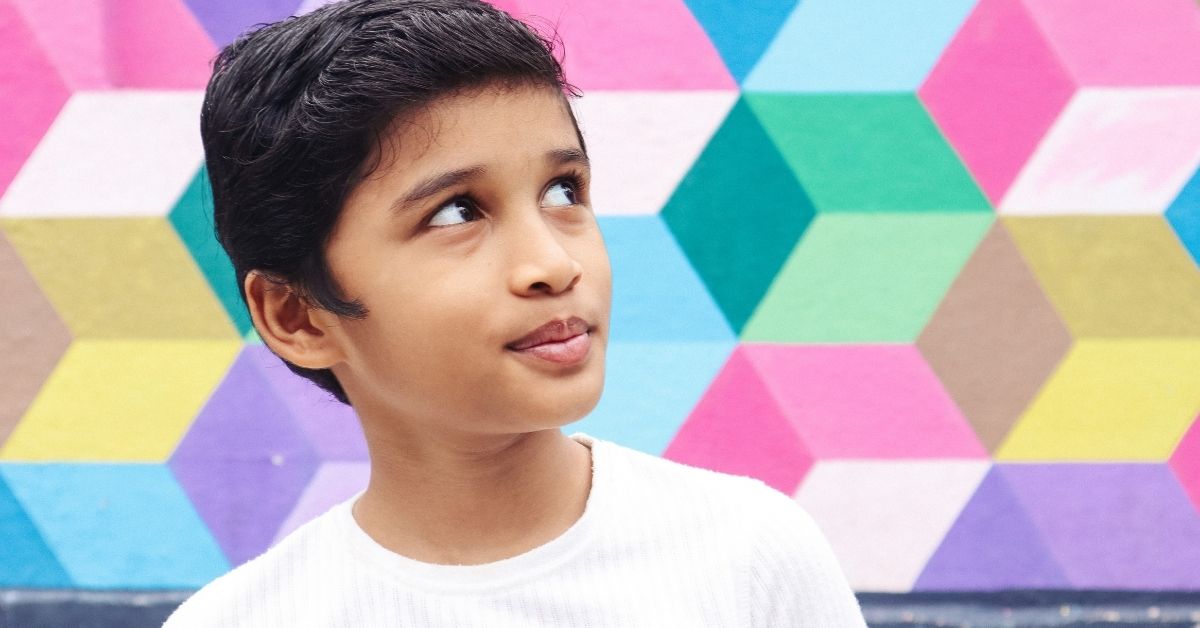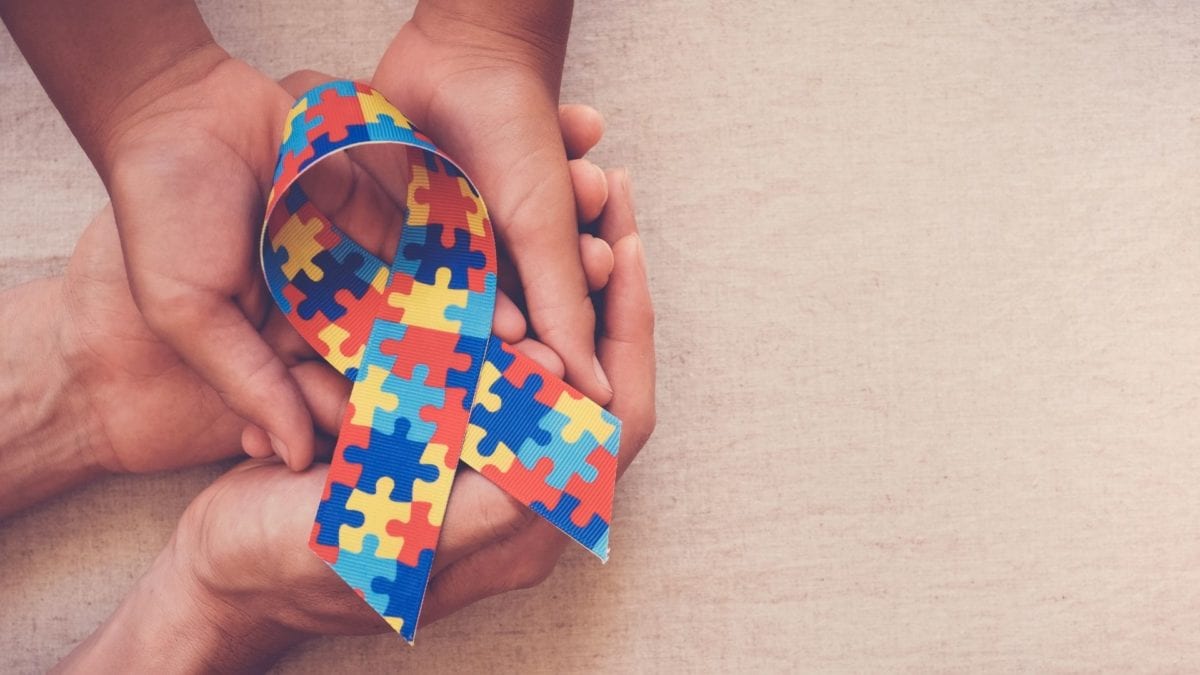Biography
Surya was the first born, delivered full term by lower segment Caesarian section, the indication being a big baby weighing 3.4 kg with a large head and cephalo-pelvic disproportion. The Apgar score was 9/10 (excellent). There was no neonatal seizure or any other health-related event of significance in the neonatal period or in infancy. With the passage of a few months the parents noted that the infant’s response to familiar people, even to them, lacked spontaneity, and eye contact was sparing. He was preoccupied with repetitively examining one favourite toy over a long period of time and this form of restricted play continued into childhood. He did not walk till almost 2 years, and even when he did, he was awkward and had frequent falls in the early phase. It was, however, the delay in the speech/language milestones with the first few meaningful words expressed at 2 years, that caused greatest parental concern.
At this stage, a diagnosis under the broader umbrella of Autism Spectrum Disorder (ASD) – Pervasive Developmental Disability – not otherwise specified (PDD-NOS) was arrived at by the specialist in USA and early therapies were started. The parents stuck to the specialist advice to confine the child’s exposure to a single language and English served the school and home front. On joining school at three years, there was some improvement in his verbal expression, but by 4 years, with the family back in India, from abroad, he had achieved wider language and communication capability. This is the magic gift that Indian children born abroad receive on exposure to the Indian milieu, even short-term, where grandparents, aunts, uncles and cousins, chatter incessantly, not necessarily in English, but also in their child-focused affection, rally round to address the child face-to-face!
Exploring the Condition
Surya’s speech, which lacked clear enunciation, accent and prosody, and had a nasal quality, required special attention and the child had regular speech therapy from the age of 4 years, aside from occupational therapy and special education outside mainstream schooling. Surya manifested restlessness, easy distractibility, poor motivation, social anxiety and on occasions, impulsivity, which also required correction. When he was brought by his parents to TriMed-Neurokrish two years back, at age 9 years, they appeared as stressed as Surya himself. As a high performing ASD, he had managed to barely cope with mainstream schooling upto the primary grades (ICSE Board syllabus), with poor math skills and dyslexia. Anxiety was mounting as he progressed to high school level with its academic demands. To add to the displeasure at school, he was bullied by the other children, who did not let him join them in the ball games offered, as he was slow and clumsy. When this awkwardness was analyzed by the specialist, it pointed to poor hand-eye co-ordination as a main cause. School refusal started to set in and the parents recognized the red flag signal which called for more intensive professional attention. A close friend suggested TriMed-Neurokrish as a possible solution to the child’s learning disability and emotional problems.
Surya had got this far academically, without major behavioural problems, as all along, the mother had dynamically participated in fulfilling his study requirements and emotional needs and the school had been supportive. His mother, a well educated, perceptive lady, continued to follow the special education methods at home, which she observed during the child’s sessions with the special educator. His spelling skills took a big leap forward when he was taught by the phonetic method. The mother spent long hours with Surya over his homework, partly by following rote learning methods, though by elaborating on the topics’ ramifications, she managed to bring in some conceptual learning, which ensured better retention and recall in him. Math skills were just picking up at a basic level, but Surya was happy to run up to the corner store to purchase some small items of grocery the mother requested, and managed every time to bring back the correct change.
Our Healing Approach
At TriMed-Neurokrish, a comprehensive assessment, by the team members was carried out with meticulous care. The child was thin built, with dysmorphic features, with a narrow face, low set ears, close set eyes, and a tendency to keep the lips parted slightly, the last due to a chronic sinusitis and nose block. No other abnormal systemic signs were observed and laboratory tests were unremarkable, except for low D3 levels, which was corrected with oral medication. We had a team meeting to formulate a list of priority moves to gain effective control in the management of Surya’s educational and psychosocial problems. A diagnosis under High functioning Autism Spectrum disorder – Pervasive Developmental disorder not otherwise specified (PDD-NOS)/Asperger’s syndrome (based on the Sohn Grayson Rating Scale) with Learning Disability (LD) was arrived at, and the broad management plan was discussed.
The immediate goal was:
- To reduce Surya’s anxiety levels and get him to attend school regularly, a few hours initially, progressing to full day attendance
- To overcome separation anxiety when the mother dropped him at school and left
- To motivate him to engage in other activities than studies
- To work on his fears and phobias of ‘robbed’, ‘kidnapped’, ‘killed’ which disturbed him
- To offer caregiver support to the mother who was highly stressed
By way of medication, Surya was given Attentrol – (Atemoxitine) to improve his attention on tasks along with a anxiolytic.
The Clinical Psychologist found his academic performance adequate, based on the NIMHANS Battery (Specific Learning Disability Index). Regarding his special academic needs, with long term coaching outside school, Surya was able to cope with reading, writing (including spelling), at his 8th grade levels, with math ability at 5th grade levels. His handwriting skills were poor due partially to defective fine motor control and his focusing power on tasks required reinforcing with repetition. All these deficits put together made him very anxious regarding coping with studies.
Our intensive therapy for Surya followed our protocol for children with Neurodevelopmental Disorders (NDD) and included a combination of two Ayurveda treatments (Shirodhara & Abhyangam), Play Yoga, Neurodevelopmental Therapy (NDT, a combination of physical and occupational therapies, in his case with a handwriting focus) and psychological therapy (behavioral and family). Sessions of NDT and BT often continue for months in regular periodicity, and include weekend opportunities to meet with peers (also in therapy), socialize, and develop skills of emotional expression. Later, understanding his fondness for ‘gadgets’ we involved him in a cognitive enhancement program using structured computer based gaming to enhance specific cognitive skills.
Our team, after much deliberation, suggested to the parents, special education for Surya at a school of excellence, and with the Open School Examination system offered there, he settled to a comfortable pace of school work.
The special educators of the school, in dialogue with Surya’s parents, chose subjects for him that he would be able to comprehend and work out in a relaxed manner, and which would lead him to a future career as a high performing ASD. In this more relaxed school environment, the child overcame his fears and the separation anxiety was no longer a problem. Day-to-day, moment-to-moment caregiver stress was significantly reduced in the mother, who decided to expose Surya to other activities than studies as suggested by the TriMed-Neurokrish team. Coaching in swimming and keyboard playing were chosen as two diverse activities (with the mother joining the coaching sessions as well) which would benefit physical fitness, cognitive ability, concentration, fine motor activity, musical sensitivity, sensory integration and many other finer aspects of development in the child.
Surya’s motivation and empathy to go with the mother did not last for long and the ASD trait of preference for routine and repetitive activity prevailed. He preferred to unobtrusively sit watching his mother, as she completed the courses successfully and went on to the next level of training with the hope that perhaps Surya would get back to these activities some day with gentle persuasion and the slow but sure outcome of goal-directed CBT! She brushed aside this wishful thought and got back to the present with its encouraging progress in Surya.
He was however, enjoying his Behaviour Therapy and Cognitive Enhancement sessions at Trimed-Neurokrish and the team members gave of their best to sustain Surya’s interest through the sessions. He continued to listen to music, most often a favourite tune and beat repeatedly. He responded positively to engage in a short-term novel activity for which he was rewarded. In a BT session to learn how to tie his shoe-lace, his motivation was that he would get new shoes, and sure enough he mastered the skill in two days! What worked towards motivating Surya without fail was the reward in the form of a car ride, to undergo any new learning process. So the team went through BT for activities of daily living, interaction with strangers, mentoring and token economy, in a graded manner, to more advanced cognitive enhancement paradigms of arithmetic tasks, logical reasoning and critical thinking. Incorporating the subject’s areas of special interests in therapy, using visual aids and including parents in therapy sessions, the benefits of cognitive behavior therapy and cognitive enhancement became apparent.
“In this more relaxed school environment, the child overcame his fears and the separation anxiety was no longer a problem.”
Our Focus:
Autistic Spectrum Disorder
Autistic spectrum disorder (ASD) is a group of developmental disabilities that can cause significant social, communication and behavioral challenges. Autism represents an unusual pattern of development beginning in the infant and toddler years. Language and communication, learning, thinking, problem solving, social interaction, stereotypy and other behavioural patterns, lack of empathy and performance of activities of daily living may show varied levels of involvement. Neuropsychiatric and neuropsychological evaluations in Autism have revealed selective dysfunction of ‘social cognition’, with sparing of motor, perceptual and basic cognitive skills1. According to DSM IV the spectrum of autistic disorders comprise autistic disorder, Asperger’s syndrome, pervasive developmental disorder not otherwise specified, including atypical autism (PDD-NOS), Rett’s syndrome, and childhood disintegrative disorder. When full criteria of the five under this umbrella are not met, it falls under the category of PDD-NOS. High functioning Autism Spectrum disorder – Pervasive Developmental disorder not otherwise specified (PDD-NOS)/Asperger’s syndrome is diagnosed by employing an assessment questionnaire for the subject’s parents named the Sohn Grayson Rating Scale, a questionnaire for the subject’s parents, covering the academic, cognitive, psychosocial and other domains, which may indicate a higher performance and atypical pattern of the spectrum in the subject studied, as in our patient, Surya. Before this instrument is used, there are over seven diagnostic tools for ASD, including Autistic Behavioural Checklist, Autistic Spectrum Screening Questionnaire and observational tools which must be employed on subject to be tested.
Global prevalence of ASD is about 1.5 per 1000. There has been a 600% increase in prevalence over the last two decades. In a multinational study, the point prevalence of ASD was 7.6 per 1000 or 1 in 132 in 20102. In India more children with ASD are being identified, earlier than before and as a result, early intervention is possible with developmental disability institution being made available in the public sector as well. But these are few and far between. The average age at presentation to the clinic in India was 21.23 months (SD = 2.18)3. They present clinically in a manner similar to that reported internationally. Awareness among professionals and the public is increasing over less than a decade.4 As yet, there is no aetiology-based intervention for autistic spectrum disorders (ASD). However, symptomatic treatment and therapies with a cognitive-psychoeducational/behavioural approach can be of value in moderate ASD5.
References
- Vaghbatta. Shirodhara AshtangaMisra V. The social brain network and autism. Annals of neurosciences. 2014 Apr;21(2):69.Hridaya, Sutra Sasthana, Chapter 22
- Baxter AJ, Brugha TS, Erskine HE, Scheurer RW, Vos T, Scott JG. The epidemiology and global burden of autism spectrum disorders. Psychological medicine. 2015 Feb 1;45(03):601-13.Ajanal Manjunath, Chougale Arun Action of Shirodhara– A Hypothetical Review J Res. Med. Plants & Indigen. Med. Sept. 2012 1; 9 : 457–463
- Malhi P, Singhi P. A retrospective study of toddlers with autism spectrum disorder: Clinical and developmental profile. Annals of Indian Academy of Neurology. 2014 Jan;17(1):25.
- Malhotra S, Vikas A. Pervasive developmental disorders: Indian scene. Journal of Indian Association for child and adolescent mental health. 2005;1(5).
- Francis K. Autism interventions: a critical update. Developmental Medicine & Child Neurology. 2005 Jul 1;47(07):493-9.
Looking Ahead
Surya is relaxed in his new school, and stress and anxiety of school work has left him. He is catching up with many ADL, and is even more motivated to do so with a reward at the end of each novel learning process. With improved performance and by dispelling his fears and phobias through logical thinking taught to him at the CBT sessions, Surya has conquered many of his fears and phobias and to a considerable extent his social anxiety.
He continues his CBT/CET and follow up at Trimed-Neurokrish, twice a week and the team is more than pleased to receive him for his sessions, as there is good compliance and palpable progress with each visit to the clinic.
The parents are at peace and are relieved to have found a centre which offers a holistic approach towards Surya’s all round development.








